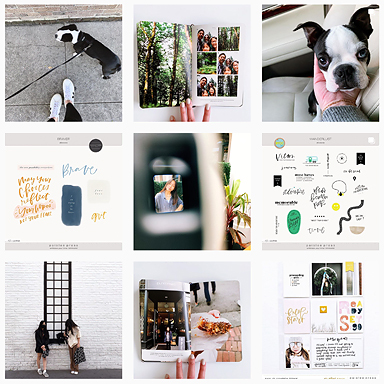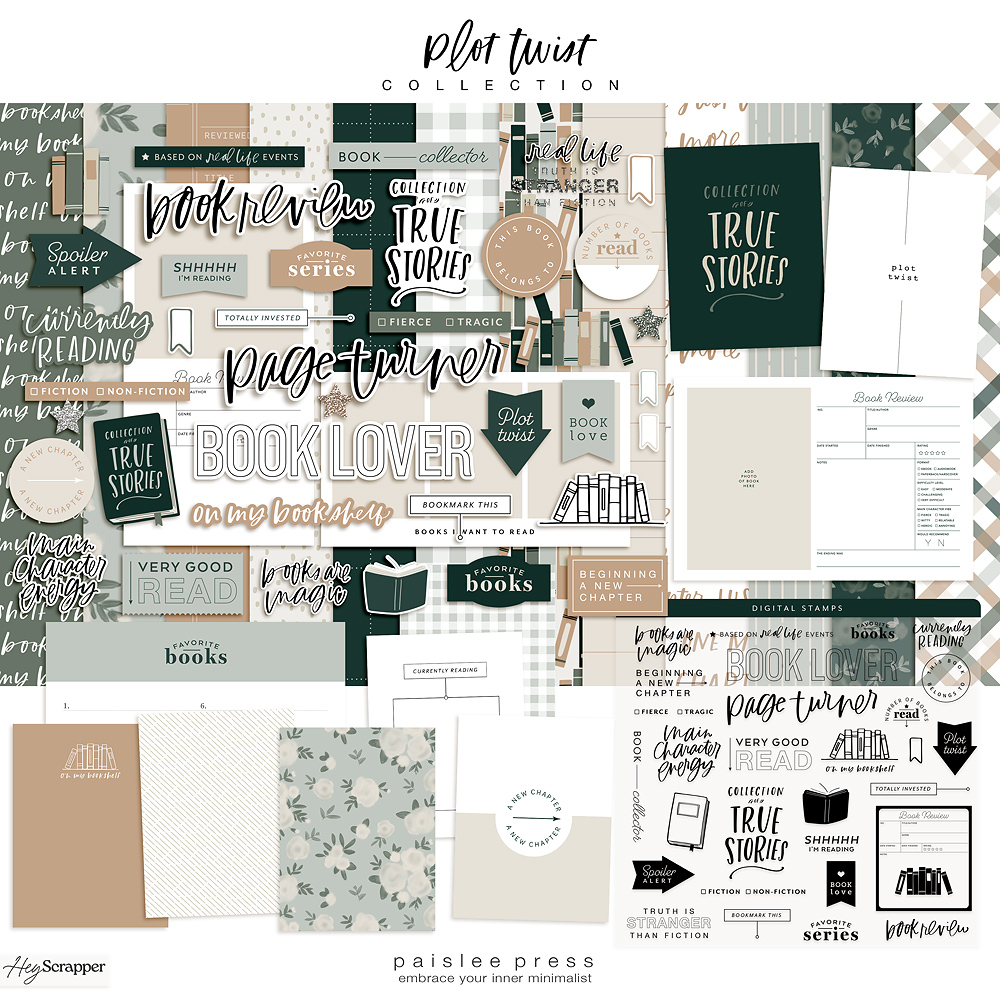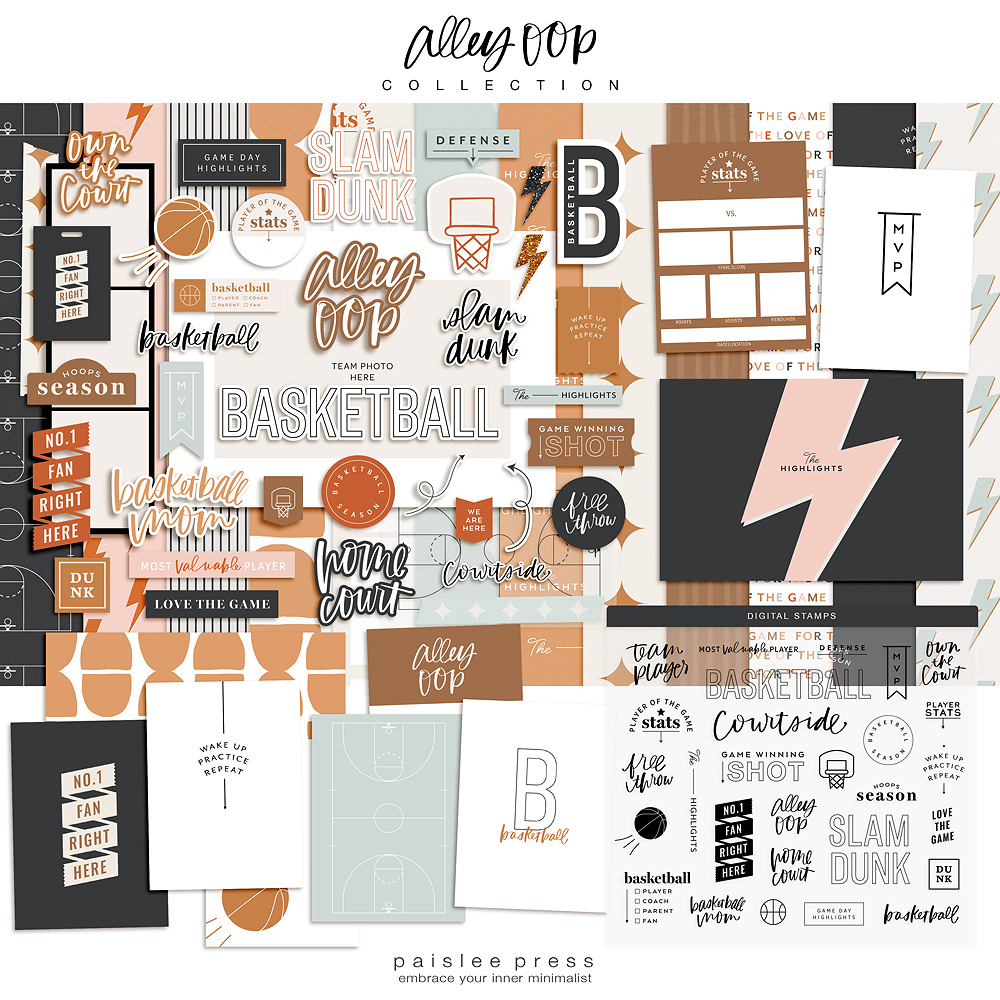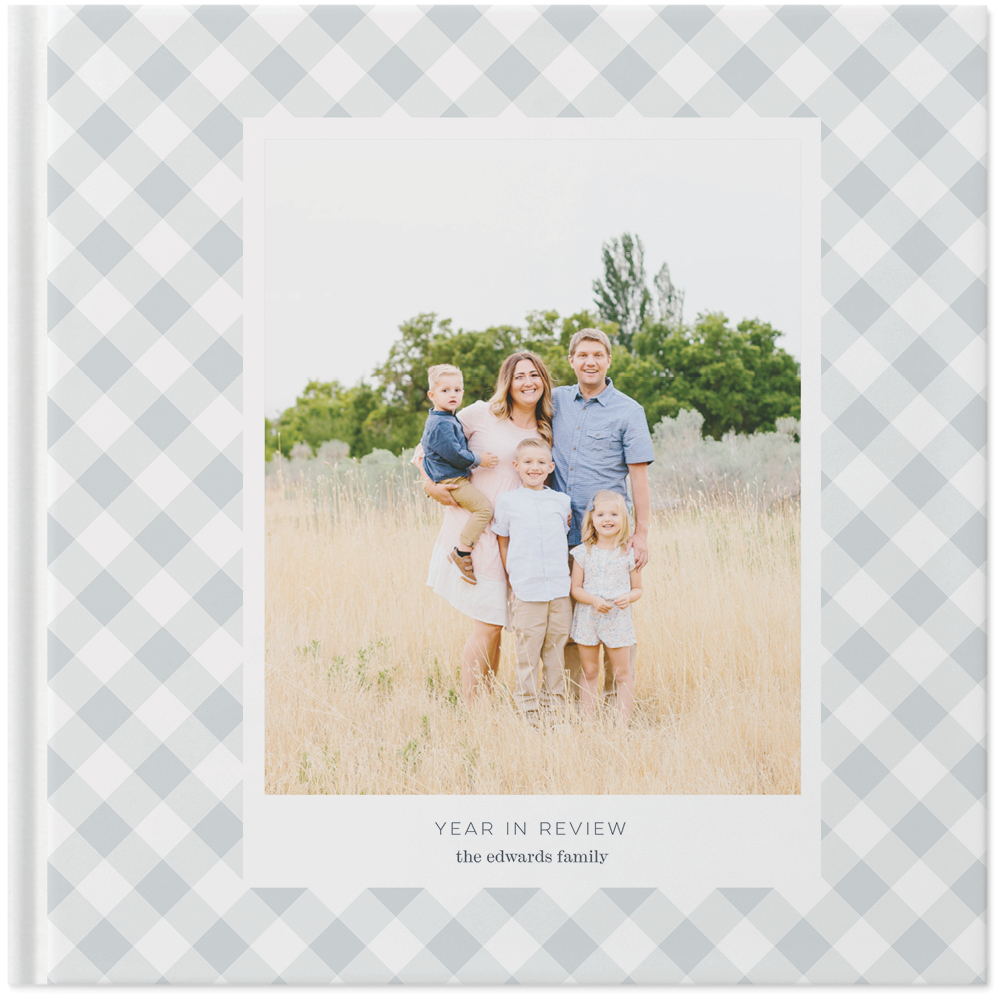
It seems that one of my goals every year is to simplify all the things – my home, my closet, my calendar, my life. Today I’m sharing how this general rule currently applies to how I’m documenting our adventures. Read on for my personal approach to minimalist memory-keeping.
I’m a fan of beginning with the end in mind, so about a year ago I thought about how I liked flipping through our albums, and I realized I love looking at one experience, month, trip, etc in a single layout: just two pages facing each other, maybe an insert, and that’s it.
Life is lived out in the details, but my memories are usually more general. When I reflect back on a period of time, I think of it in seasons or whole experiences, not every single moment.
So that’s how I’m documenting these days: single layouts devoted to big experiences, seasons, months, or whatever period of time feels appropriate. It means each layout tells a bigger story in a small space. That feels good to me right now, rather than a more detailed weekly format, which worked for me when my kiddos were babies.
Sounds all fine and good and maybe a little lofty, but what now? Here’s what this looks like when I’m designing a layout.

First: editing.
My husband and I take a gazillion photos, but when it comes to my pocket page album, I’m crazy about editing my photo selection. For our “big” trip to Spain and Portugal, I documented ten days in a single layout, choosing a dozen or so photos from several hundred. I try to let go of including every great moment (there are too many!) and think about what makes the most honest impression.
For our recent trip to Israel, I did the same thing: just fifteen photos to document an epic 11-day trip.

Obviously, I didn’t include every experience. The text references the itinerary each day, but the photos just give a general impression of the trip. They’re meant to be a bit emotional without feeling gloomy, which is how our time in Israel felt to us.

I’m also working on a little insert to include some of the ephemera – ticket stubs, museum pamphlets, etc – that we collected along the way. Stay tuned for that.
Second: edit photos on my phone.
I used to edit photos on my laptop in Photoshop, but honestly my computer is over five years old and drives me insane. Plus, I haven’t been traveling with my DSLR, which means I’m using my phone almost exclusively.

The editing apps available these days are so robust, and the camera on my iPhone 6S is stellar. Lately I’ve been pretty happy with A Color Story. I like their fresh filters, but usually I just use the tools on the app to make any necessary adjustments.

Third: inject white space.
White space is so important in design. Why? It gives your eye a place to rest, it highlights design elements, and when it comes to photo projects, it helps the people in your photos shine.

I make sure to incorporate white space in the photos themselves, by zooming way out or using the “rule of thirds” to make sure the entire frame isn’t used. This has the added benefit of making room for text or embellishment.

I also add white space through photo templates. You can include more photos on the page without the pocket looking too busy. Win-win.

Fourth: keep the design elements really (really) simple.
I try to pick two to three design elements per layout. Even though I might experiment with different elements throughout the album, I find that I’m happier with the finished product if I stick to just a couple elements in a single layout.

In this layout, I chose the wood grain background, two fonts for all the journaling, and a few of Liz’s photo templates (see below for links). I included one patterned card from the Project Life Everyday Edition core kit, which was designed by Liz.

The resulting layout has a lot of photos and some modern design elements without feeling too busy. It’s my favorite kind of pocket page.
What are your design goals these days? I’d love to hear in the comments what you’re doing to simplify the memory-keeping process.
This week I’ll be back over on my blog with a video tutorial sharing my process for adding the text to these photos, including my number one photo tip and my favorite free fonts. Be sure to stay in the loop (and get exclusive access to some design freebies).
Wishing you a happy, healthy, simple, and creative twenty-seventeen!
xo, Catherine
Products used: 4×6 photo templates vol. 1, 4×6 photo templates vol. 3, 4×6 photo templates vol. 6, on my desk, Project Life everyday edition core kit.










What a beautiful layout 🙂 I love how you manage to fit in so much in just one layout!
If I remember correctly you mentioned at some point that you also make photo books, where you include more photos than in your PL albums. Do you still do that or do you just stick to PL?
Hey Diana! You are so kind 🙂
Yes to the photobook situation. For our big trips last year I *may* do individual photo books. OR I may do a monster 2016 photobook. We traveled so much last year there are a LOT of pics. Have not decided but I’m working on it.
What do you do? Photobooks? Project Life? Combo??
I have created digital Project Life albums for the years 2014-2016 and had them printed as photobooks, which means that I have been able to include all the photos I want since photobooks take up so little space anyway 🙂 I’ve also made four physical PL albums for the years 1985-2009. But for the years 2010-2013 I made more traditional photobooks (hadn’t discovered PL yet). They don’t include any journalling, just some titles + dates. So now I’m considering bridging that gap and making physical PL albums (could make photobooks with PL for those years but I want more physical albums to work on because it’s so much fun). So basically I was curious to know about your process and how you decide what you include in the PL albums and what goes in the photobooks 🙂 Of course I’d be working backwards, doing PL after photobooks, but learning about your process might be helpful anyway 😛
Love this! Such helpful tips! I’ve been so lazy about scrapbooking since I had kids because it’s so hard to get to a computer. Editing on your phone is such a great idea!!! Which app do you use to add words?
So, to add words I still use Photoshop (or Photoshop Elements). I’m working on a tutorial – with video – to share exactly how I do this, the fonts I use, sizes, placement, etc. I have played around a bit with the Project Life app – You can put two photos on one 4×6 and add words, then print the photos directly from the app. I’ll play around and see about doing a tutorial for the app as well 🙂
Love your clean and simple approach – always. My eye stays drawn to these pages for longer periods of time and this approach makes me happy.
These pages are absolutely beautiful to the eye. Hope you don’t mind if I copy this idea, it’s just so good!
Of course not! If you post a pic on Instagram tag me so I can see your interpretation! I would be honored 🙂
hi. i love the simplicity of your pages and also doing it all from your phone. how do you get the photo templates onto your phone and what app do you use to do that with from your phone?
thank you,
Sandra
Hi! I love this minimalist layout. I have thought of abandoning scrapbooking many times because of the clutter, expense and accumulation of photos and supplies, but I still find value in documenting some special memories with a few photos – and I love the opportunity to be creative.
Can you tell me how you get the text onto the paper? Do you have to put it through the printer? How do you line up the paper in the printer?